Pilchards – Florida’s best go-to live bait for saltwater species of all kinds
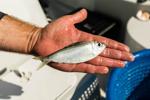
The pilchard, also know as the European sardine, is a small, oily fish that belongs to the herring family. They are found up and down the Florida coast as well as in the eastern Atlantic Ocean, ranging from Norway to Morocco and the Mediterranean Sea. Pilchards are a schooling fish that live in large groups. They are often targeted around docks and inshore structure using cast nets. Around Florida, pilchards are a popular baitfish prized for their hardiness and plentiful numbers, however, their population can fluctuate greatly from year to year.
HABITAT:
Pilchards are an important part of the marine food chain, serving as prey for a variety of larger fish and marine mammals. They prefer to live in warm, shallow waters and are commonly found in coastal inshore bays and estuaries, with rocky or sandy bottoms. Pilchards are also known to migrate seasonally, moving to deeper waters during the winter months and returning to shallower waters in the summer.

MATING HABITS:
Pilchards typically reach sexual maturity at around 2 to 3 years of age, and they can live for up to eight years. During the mating season, which usually occurs in the spring and summer months, male pilchards will form groups and swim around females, releasing their sperm into the water. The females will then release their eggs, which are fertilized by the sperm. The eggs hatch within a few days and the larval pilchards will drift in the ocean currents for several weeks before settling in a suitable habitat.
USE AS A BAITFISH:
Pilchards are a popular baitfish among anglers and are used to catch a variety of game fish, including jacks, snook and tarpon. When using pilchards as bait, it’s important to handle them carefully to avoid damaging their delicate scales and skin. Pilchards are often sold in bait shops either fresh or frozen, but your best bet is to find a school of livies swimming around your local dock and net them.

To keep pilchards alive to use as bait, it’s critical to have a working livewell with an aerator and good water filter. Dirty water will kill these baitfish quickly as will low oxygen in your bait well.
Like all live baitfish, there are a few ways to hook pilchards. This includes through the nose, which tends to be the most solid technique but doesn’t give it an entirely natural look in the water. You can also butt hook them, which allows them to swim freely and pull the line behind them, allowing for a more natural appearance. Some folks like to hook them in the back just behind the gills, but its important to be careful as a badly inserted hook can paralyze the pilchard if the hook hits the backbone.

Pilchards can also be used as chum, either alive or cut into chunks. This can be particularly effective when fishing for tuna, as the strong scent of the pilchards can lure the tuna to the surface. If you are chunking, it’s important to present the hooked chunk in a way that it mimics the falling chum bits in the water.

Overall, pilchards are hands-down one of the best live baitfish one can find around the big FL. They’ll catch just about anything; they are hardy; and they are relatively plentiful if you know where to look. Just be sure to treat them with care and have a proper live well, doing so will ensure that your lively baits will last you an entire day of fishing.
Good luck and tight lines!



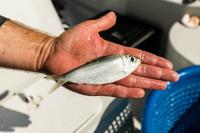
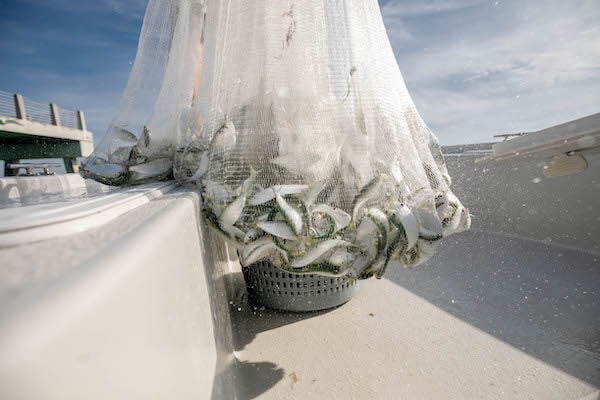

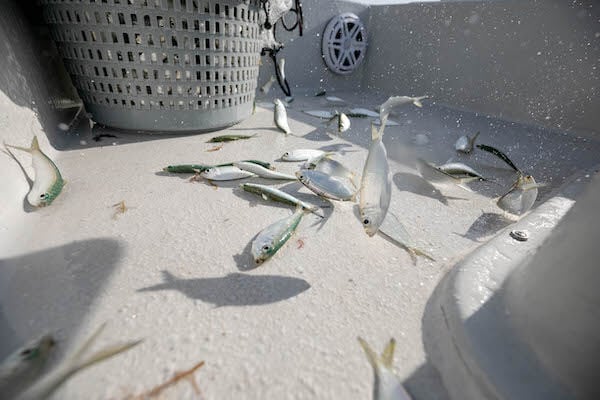


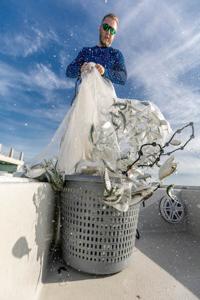


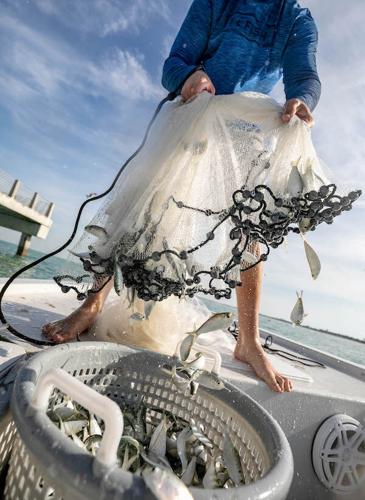

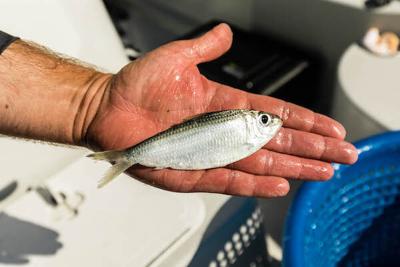
(0) comments
Welcome to the discussion.
Log In
Keep it Clean. Please avoid obscene, vulgar, lewd, racist or sexually-oriented language.
PLEASE TURN OFF YOUR CAPS LOCK.
Don't Threaten. Threats of harming another person will not be tolerated.
Be Truthful. Don't knowingly lie about anyone or anything.
Be Nice. No racism, sexism or any sort of -ism that is degrading to another person.
Be Proactive. Use the 'Report' link on each comment to let us know of abusive posts.
Share with Us. We'd love to hear eyewitness accounts, the history behind an article.